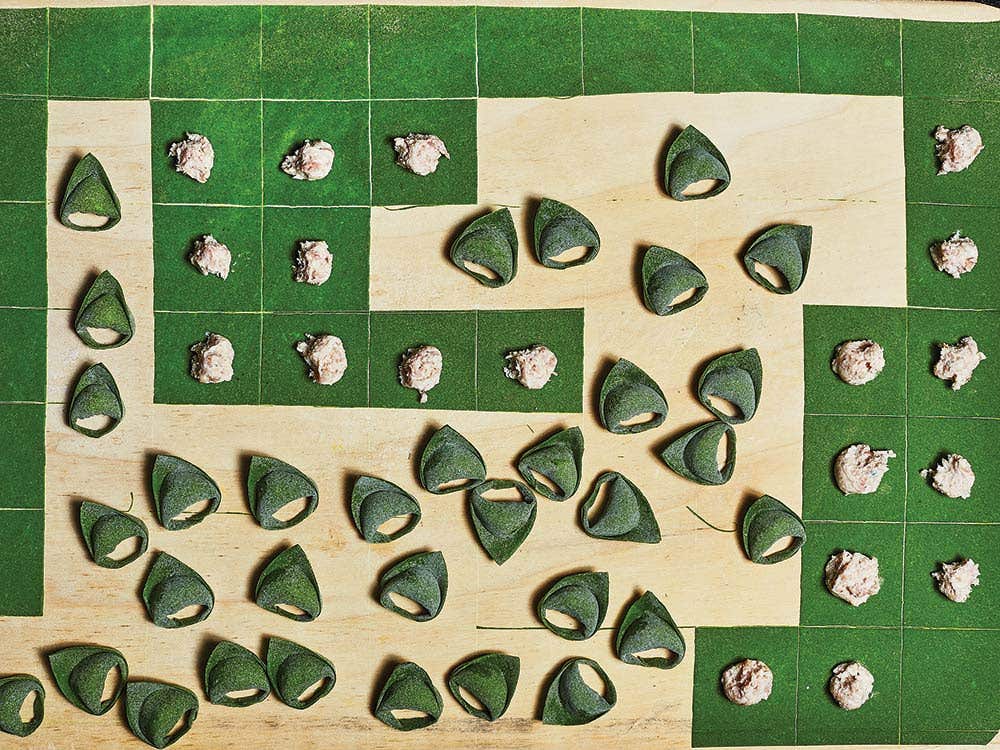
How to Make the Perfect Stuffed Pasta
Lessons for the best ravioli, tortellini, and everything else you fold out of pasta dough
I'd always imagined learning to make tiny, perfect tortellini from an aging native of Bologna or mastering pillowy agnolotti through a long apprenticeship in an obscure Piedmontese village. But then I heard about Evan Funke and his pasta-centric restaurant Felix on Abbot Kinney Boulevard in Venice, with its pristine, glassed-in pasta laboratory, his arsenal of authentic tools, and his fiercely traditional, monklike dedication to the art and culture of handmade pasta. Here, I realized, was the burly, bearded, mattarello-wielding, sfoglia-rolling filled-pasta-making mentor I was looking for.
The mattarello is a massive, meter-long wooden pasta rolling pin typical of Emilia-Romagna. Funke got his in Bologna and within minutes of my arrival, he's deployed it to transform a springy ball of spinach dough into a sfoglia, or pasta sheet, as even, smooth, and soft as the felt on a pool table.
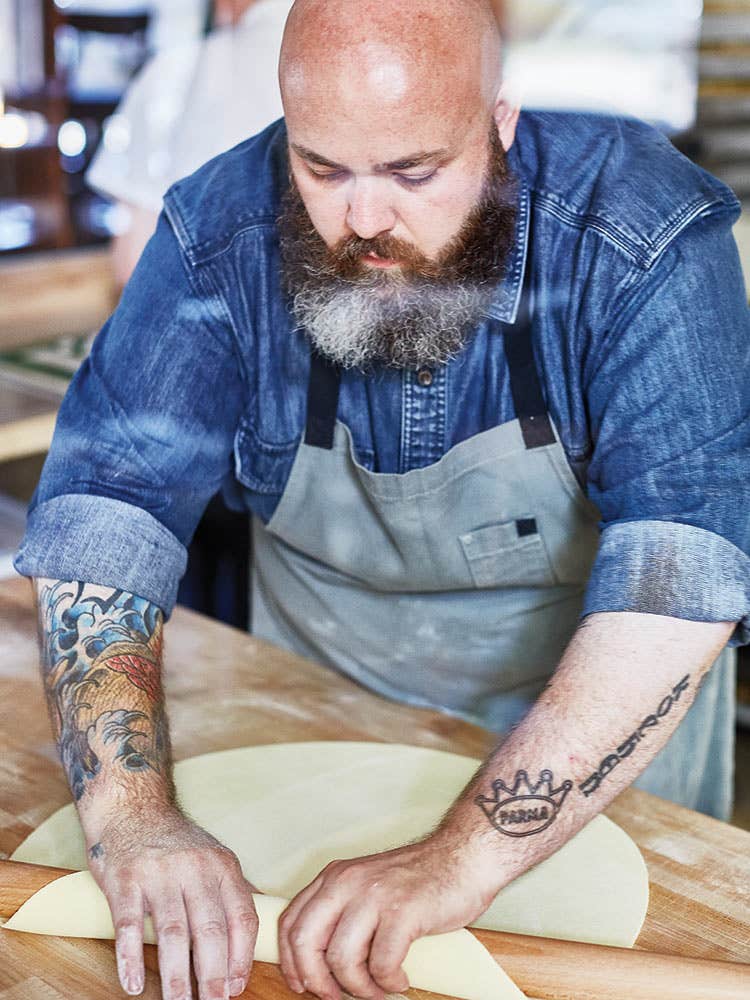
Funke did not come about his pasta proficiency easily—his now nimble fingers, lightning-fast kneading speed, and masterful shaping skills were developed over 10 years of study under many of Italy's foremost traditional pasta makers (along with some of the best of America and Japan). He caught the pasta bug at Spago in Beverly Hills, where the head chef was from Bologna. After years of cooking there, he set out to apprentice in Emilia-Romagna. "Italy to me was like mother's love, instantly familiar and so comforting," he says. "As soon as I set foot in the country, all the French and Asian cooking techniques I had learned were out the window." Studying at La Vecchia Scuola Bolognese, a cooking school in Bologna, it took him over a thousand tries to roll out his first perfect sfoglia. "I still remember the day: February 14, 2008," he says with nostalgic pride. After three months of working 10 hours a day, six days a week, he was proficient in just a few of the filled pastas of the region. Since then, Funke has been traveling back and forth to Italy, studying old-school techniques from all over the country.
Funke says the pastas I’ve come here to learn are some of the most difficult to master. “I can teach a 6-year-old how to make cavatelli,” he says. “But stuffed pastas take attention and time.” How to tinker with dough hydration, meticulous shaping, maintaining even thickness, and keeping fillings contained—these come from patient practice and repetition. Our lessons happen in his pasta laboratory—the “labo,” as he calls it, a room that also serves as a live pasta-making theater during the restaurant’s dinner service. The chef has it set to a goose bump–raising 68 degrees and damp 67 percent humidity, constantly regulated by a small machine he imported from Japan. “Like making good bread, pasta is all math,” Funke says. But there is nothing mechanical about the way he treats his. His doughs have a living quality to them, forming tiny air bubbles like the early phases of a sourdough.
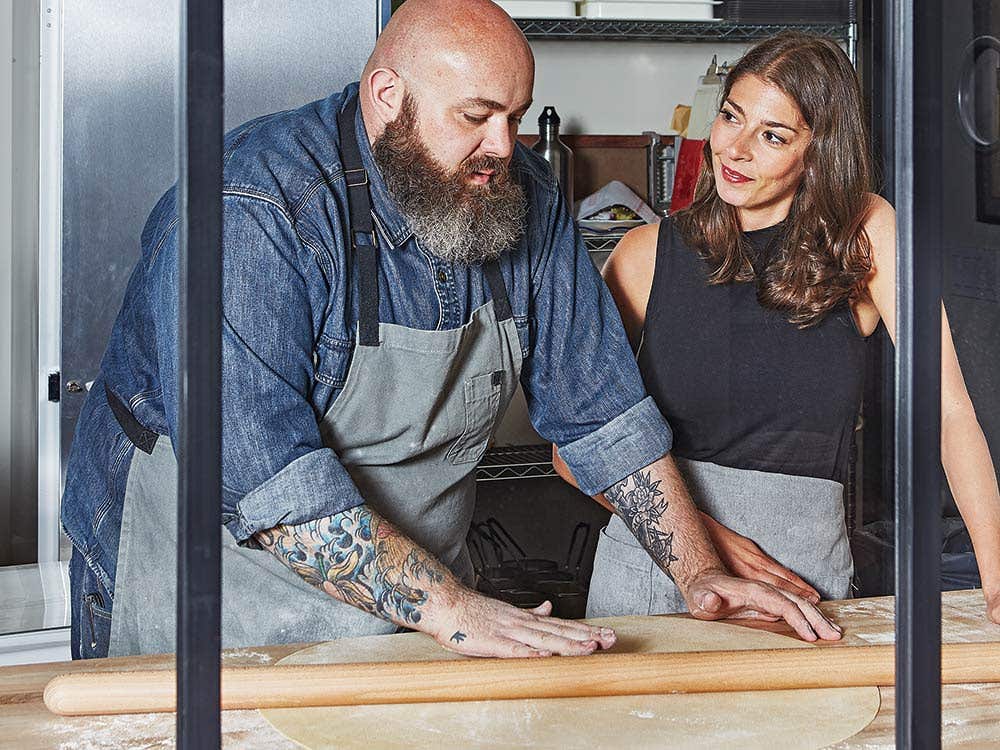
Learning the art of filled pastas in the patient way of Funke pays off. After tasting his richly flavored doughs (sturdy and with bite, never soggy, gummy, or crunchy), and chomping through his stuffed pasta's impossibly symmetrical exteriors to release a warm gush of creamy filling, you'll never settle for just any random ravioli again.
5 Essential Filled-Pasta Lessons
Anybody can dollop some Cheese between sheets of dough and call it a raviolo. But the best stuffed pastas are made with care and pay tribute to tradition. Here are Evan Funke’s nonnegotiable tips to mastering smooth dough and flavorful fillings.
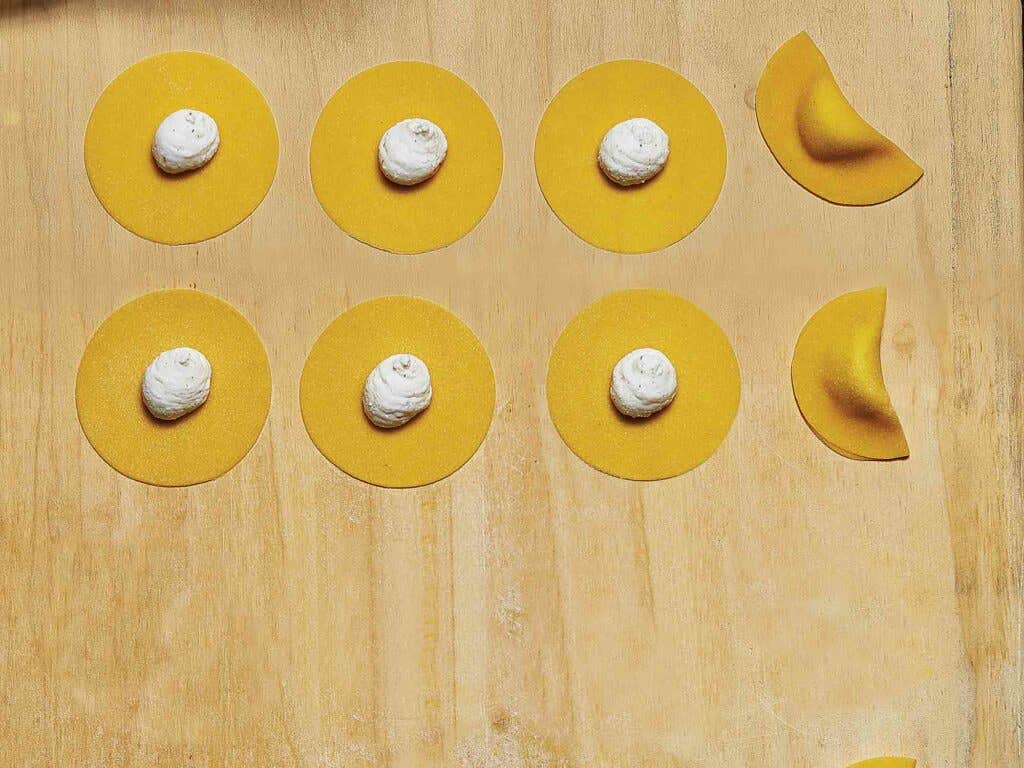
1) Roll Your Own
Funke swears that hand-rolling sfoglie with a mattarello is the secret that differentiates dense, flat-tasting pastas from fluffy, tender ones. "Fuck your pasta machine" is his hashtag and life mantra, but he says it's not just braggadocio: "If you lovingly create a ball of light dough and smash it between a pasta machine's metal rollers, you're crushing everything in it and essentially degassing it. But if you take that ball and use the mattarello, you spread out the air pockets, creating a lighter waferlike dough." Roll the sheet of dough firmly at first, then more and more gently as you get a larger, thinner sfoglia. And remember to rotate it often, making sure it never sticks to your board.
2) Stay Hydrated
For a pasta that’s strong yet supple, hydration—the ratio of solids to liquids in a dough—is key. The flours you’re using, which vary by region in Italy, dictate how much water and additions like eggs and oil to add, but there’s no magic formula. “Pasta dough will behave differently every single day you make it, based on the age of your flour, your environment, and the weather,” says Funke. “Dough for filled pastas should feel supple and on the drier side, able to be pinched and stay sealed without water.”
It may take a while to incorporate the flour by kneading—15 minutes or more—but don’t skimp on time: You won’t know how hydrated your dough really is until kneading is through. Once you’re done, don’t mess with your hard-won hydration by dousing dough in large amounts of flour or covering it in a damp cloth. “When chefs throw semolina on top of a sticky or tacky dough, it ends up dry,” Funke says. Get it right the first time (using Funke’s recipes), then wrap the dough in plastic wrap and rest it—either at room temperature for flour and water doughs, or in the refrigerator for most others. One to two hours is good. A full day is best.
3) Don't Be Dense
To prevent textural irregularities like extra-thick or crunchy spots in the finished cooked pastas, Funke focuses on the “touch points”—the places where two pasta sheets must join together to seal in a filling. “When you make the folds on any stuffed pasta, you’re joining two single sheets together, which creates double thickness,” he explains. If you don’t pinch them back down to a single thickness, you’ll have crunchy or gummy bits when you cook.
4) Fine-Tune Your Fillings
Hidden underneath the wrappings of the dough lies a lot of the true finesse in filled pastas. “You want relatively dry, homogenous fillings,” Funke says, “and they should be highly seasoned so they taste good on their own.” Each should have a binder, be it bread crumbs, eggs, or cheese, and most ingredients should be cooked. “Raw ingredients tend to bleed out when they’re cooked—raw vegetables inside a filled pasta will probably turn into a sack of juice,” he says. A flimsy or wet filling isn’t just annoying to control and contain; it can also render a perfect dough soggy and unsealable.
5) Cook Consciously
“I always make at least one extra piece to test the timing of the cooking,” Funke says. Fill a pot with abundant water (preferably around 8 quarts), and season it, just until it tastes good on its own. Despite what you might have heard, Funke warns that “the water should never taste like the ocean,” since you’ll often want to use some of the starchy cooking water in a finished sauce. Have your sauce warmed and waiting in a large skillet or warm bowl: “Wait for the pasta to swim to the top, then use a spider tool or small handheld strainer to transfer it directly into the sauce.”
The Recipes
“The Italian mind-set and approach is really based in restraint,” Evan Funke says. “You’re looking for depth and richness through simplicity.” However, stuffed pastas are not the kind of thing you’re going to throw together between pouring cocktails and finishing the roast. Give yourself around four hours (including resting time for the dough) to tackle one of these traditional regional dishes.
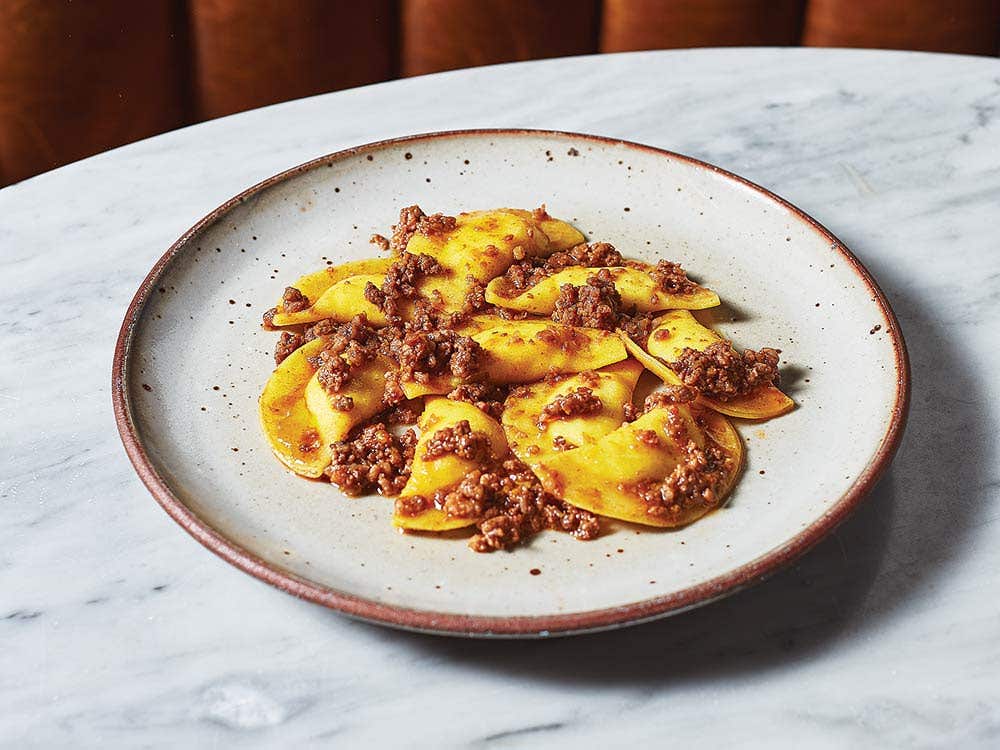

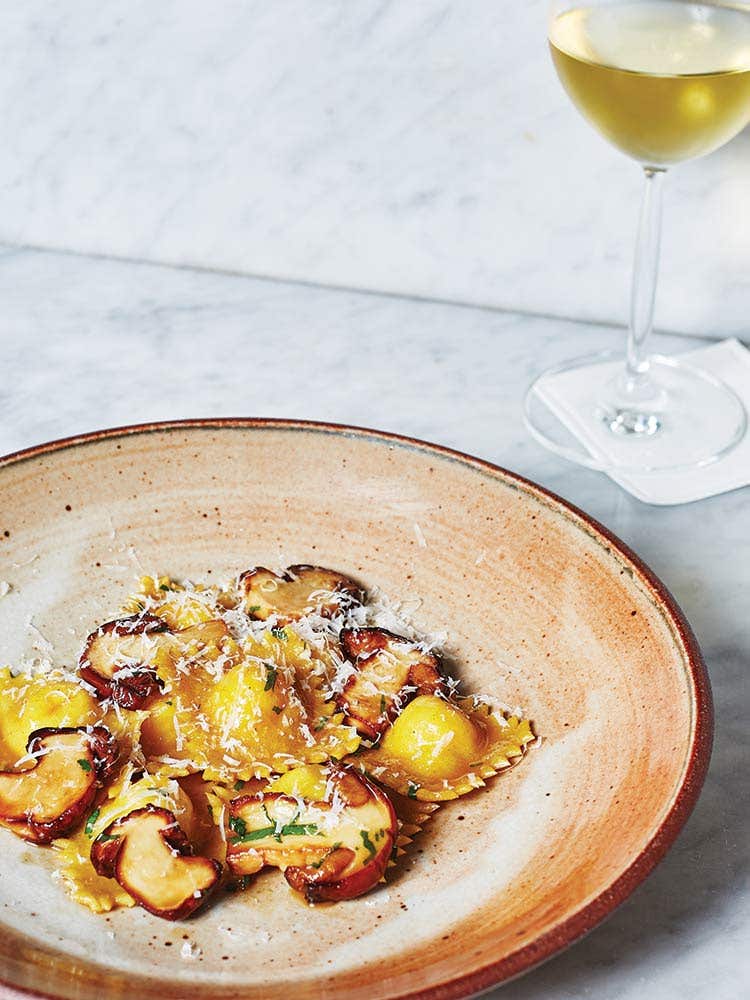
Swiss Chard Anzelottos with Pomodoro Sauce
From the tortelli family, anzelottos are rectangles often with ridged edges. “They’re made with a thicker, bright white dough of plain semola flour and hot water, which penetrates the proteins in the rustic flour more easily,” chef Evan Funke of Felix in Los Angeles says. Get the recipe for Swiss Chard Anzelottos with Pomodoro Sauce »
The Maestro's Tools
Evan Funke has built up a fearsome arsenal of pasta-making implements for shapes of all types. "You can find perfectly suitable pasta cutters in culinary stores here, but these are things I've gathered over 10 years in Parma, in Bologna, in small specialty shops and hardware stores," he says. "Hardware stores in Italy are very, very different." Funke walked us through the tools of the trade. —Sam Dean
1) Mattarello
“I use it to roll out sheets of pasta dough. It’s perfectly straight to 1/1000 of an inch. Before it’s milled the wood gets baked for 30 days at 90 degrees, so it gets almost petrified. I call this one the Mack Truck.”
2) Torchio
“I have a portrait of Thomas Jefferson hanging in my lab. He was a huge Italophile and traveled to Naples, where he was taken aback by the beauty and simplicity of this machine, which presses dough into pasta. I make pasta by hand, but Jefferson is kind of my excuse for using a machine like this sometimes.”
3) Taglia Ravioli
“These are spring-loaded on the inside so that when you press down, the ravioli is perfectly formed and sealed.”
4) Bench Brush
"The only Japanese piece here was a gift from my mentor Kosaku, who has a pasta laboratorio in Tokyo called Base."
5) Coltello di Mamma, "Mama's Knife"
“A small knife for making orecchiette.”
6) Forchetta
“A fork, obviously—I use it for mixing dough.”
7) Raschietto
“Italian for bench scraper.”
“Used for cutting pasta with different patterns.”
"These rotelle allow you to cut strips into a sheet of dough, then come across with a second pass to cut perfectly even squares for making tortellini."
10) Gnocchi Boards
“These are used to roll and texture different kinds of gnocchi.”
11) Cavarola Board
“Typically from the Mezzogiorno region, this one’s made out of walnut and used for a pasta called strascinati. The name means ‘to drag,’ and you drag pieces of dough across the board, leaving indentations that grip sauce.”
12) Chitarra
“It means guitar, but it’s actually strung with piano wire. It’s traditionally made entirely out of wood, but this one is made in America, with aluminum components. This one lasts five times as long—sometimes tradition is the practice of bad habits.”
13) Coltello per Pasta
“This pasta knife was handmade for me by the daughter of my maestro Alessandra Spisni.”
14) Piccolo Mattarello
“This small rolling pin goes to the cavarola board—it’s what you’d use to roll the strascinati.”
15) Corzetti Stamps
“These stamps were hand-etched in Liguria by a man named Cesare. They imprint a fennel bush into corzetti, a coin-shaped pasta.”
16) Troccolaturo
“This brass roller is for cutting a pasta called troccoli, which is a lot like tagliatelle.”
17) Ferretto
“A metal rod used to make fusilli. This one is brass, but you also see people use a broken umbrella rib or a bicycle spoke.”
18) Pettine per Garganelli
"Pettine means comb—it's a ridged surface on which to roll garganelli with the bacchetta, or little stick."
Keep Reading
Continue to Next Story










